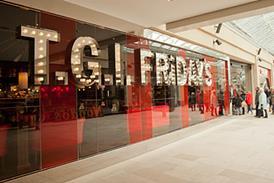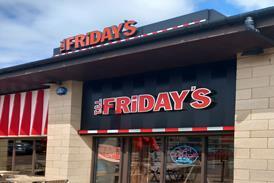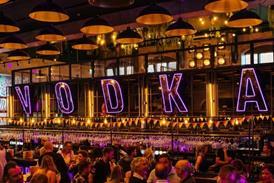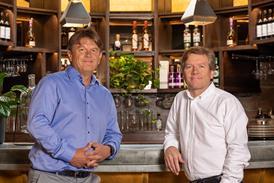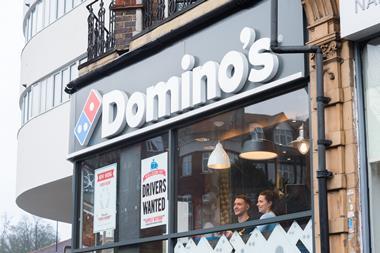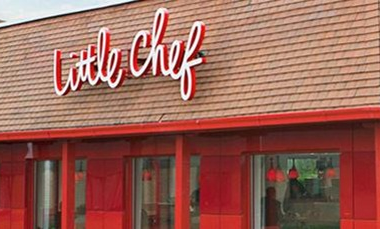The recent travails of The Restaurant Group may make it hard to remember that this was a company that once looked like it could do no wrong. Dominic Walsh looks at how things went awry and ask if the right people are being blamed. He also discusses the market’s reaction to Domino’s recent trading update and looks at the prospects for C&C Group.
A few years ago, when The Restaurant Group was still hitting it out of the park on a regular basis, I remarked that its management, then led by Alan Jackson and Andrew Page, seemed to have developed a knack for wringing maximum performance out of restaurant brands that, to my mind, had minimum appeal. Through the years of success, I kept expecting the duo to drop the ball, reckoning that they surely could not continue defying gravity. Yet still they kept churning out the numbers, consistently and impressively. And, they didn’t even resort to discounting!
The recent full-year results made for rather more sober reading. The Frankie & Benny’s and Chiquito operator topped off a disastrous year by slumping to a loss of £39.5m after write-offs. While like-for-like sales slipped by 3.9%, the most painful number was the charge of £116.7m against the value of its restaurants after the closure last year of 37 of its worst-performing sites. With another eight branches pulling down the shutters since the new year and with menu price cuts unlikely to start driving volumes to a material extent until the back end of the year, it looks like another difficult year in prospect.
While it would be easy to carp and claim to have known the good times could not last, by the time the profit warnings started coming thick and fast early last year I had become converted to the idea that The Restaurant Group could continue to keep the plates spinning indefinitely. It was less than a year before the first profit warning that I had sat down with Danny Breithaupt and been assured by him that this was a business that would double in size over the ensuing eight to 10 years.
One of the themes of the interview was that the company had been hiding its light under a bushel, but was now ready to come out and sing about its success. “So maybe in the future we will be heard of a little bit more,” he told me. Unfortunately for Breithaupt, his prediction has come true, but for the wrong reasons, and now he, together with former finance director Stephen Critoph and Alan Jackson, are history.
Given the very eloquent assessment given by MCA editor Mark Wingett about the progress already made by new CEO Andy McCue and the challenges ahead, I will not go over the same territory (although I do have some doubts over his ability to find sufficient high-quality sites to realise his ambitious growth targets for the excellent Brunning & Price pub business).
What I will just throw out there is a question: is it really fair to heap most of the blame on Breithaupt? And if it isn’t – and according to Mr McCue’s analysis, the root of the problems go back to decisions made three or four years ago – then shouldn’t the company be seeking to claw back some of the bonuses and pay-offs paid to other directors, in particular former CEO Andrew Page and Mr Critoph? The company reckons not, insisting the men got the barest minimum they were entitled to, although I am aware of at least one shareholder who does not feel quite so sanguine about the issue.
Then again, maybe Mr McCue is right. When I asked him about it at the results, he declared: “This is a time for looking forwards, not backwards.”
Shares fall at Domino’s
Here is another question for you: when is a profit warning not a profit warning? Answer: when Domino’s Pizza Group reports like-for-like sales growth of 1.5% in the first nine weeks of the year, then shares tumble by 13%. It is something when even a grizzled veteran like the Domino’s CEO David Wild is genuinely taken aback by a share price fall. “We expected some reaction but we didn’t expect anything on that scale,” he said. So much for his insistence that the company remained “confident in the resilience and long-term potential of our business model”.
So, why did the market treat a trading update that sparked, at worst, a tweaking of market forecasts as though it were a fully fledged profit warning? Well, the most obvious reason is that when people become used to years of double-digit or, at worst, high single-digit growth, the disappointment at a failure to hit such lofty heights is correspondingly more acute.
While the poor results of its Winter Survival promotion are neither here nor there, the admission that Pizza Hut’s more aggressive promotional activity had hurt its bigger rival was a pointed reminder that Domino’s, once the dominant player in the delivery market, no longer has the field to itself, facing competition at every turn from not only pizza rivals like Pizza Hut and Papa John’s, but also from the new generation of intermediaries like Just Eat and Deliveroo.
All that being said, it is only fair to point out that we’ve been there before with Domino’s. I can recall a couple of times in the past when the like-for-like growth dial was temporarily turned down, sending the shares in the appropriate direction, only for the company to return to form at the next trading update and for the share price to resume its steady march north. On that basis, the reaction to its most recent update looks likely to be a buying opportunity.
C&C Group still astounds
C&C Group is a remarkable company. Its results and trading updates tend to have plenty of minus figures – quite often including the profit and revenue lines – yet it remains so cash generative that it is able to keep paying a healthy dividend. The ups and downs of the over-ice cider phenomenon have been well documented, with the group’s distribution shortcomings in England proving a thorny issue that it has yet to fully resolve.
The company’s management has made many bold moves to expand the business, and as its thwarted M&A ambitions towards Spirit Pub Company and Punch showed, CEO Stephen Glancey and his colleagues are not afraid to think big. Other opportunities may present themselves, but as time goes on, C&C feels like a company that may prosper better in the private arena or as part of a bigger drinks company.
■ Dominic Walsh is a business reporter at The Times covering the leisure, tobacco and drinks industries


